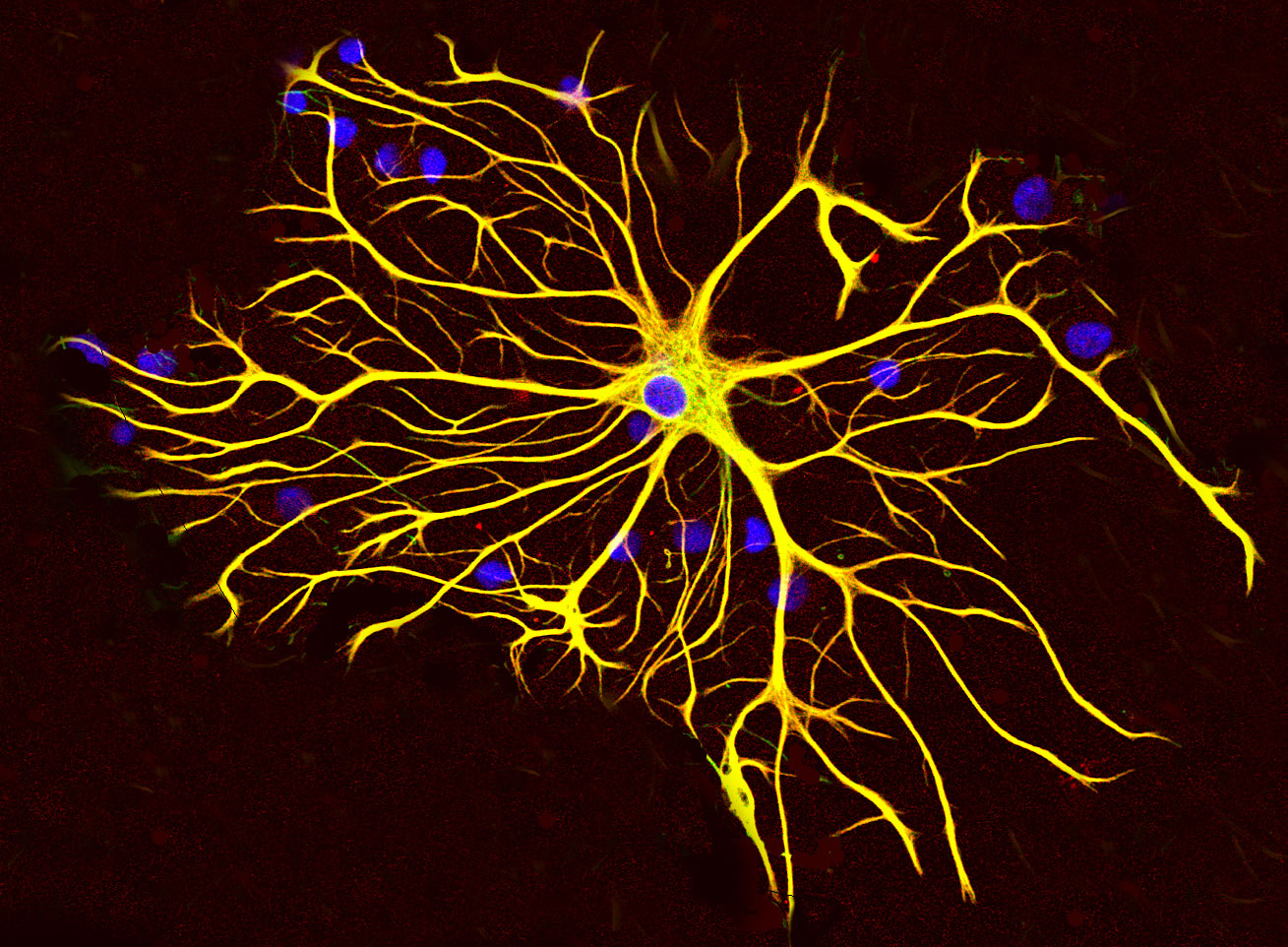Mechanism of Action

Pictured: Mast cell releasing histamine
Palmitoylethanolamide (PEA) is a biologically active, endogenous lipid that is widely distributed throughout the body's tissues and is produced on demand. It was first isolated from egg yolks in 1957 as an anti-inflammatory component and has been studied extensively in recent years.*
PEA plays a key role in maintaining homeostasis by regulating many physiological reactions associated with pain and inflammation.* Some chronic conditions can result in a hyper-immune response involving microglia, mast cells and astrocytes. Excessive activation of these satellite, non-neuronal cells has been shown to maintain pain, inflammation and result in neurodegeneration. PEA appears to act as a protective endogenous mediator that is produced “on demand” during inflammatory and neurodegenerative conditions to counter inflammation, pain, and neuronal damage.* Multiple studies have demonstrated that endogenous PEA increases in the brain and spinal cord following neuropathic pain induction, injury and other related conditions.* Microglia, astrocytes and mast cells are the most recognized cellular targets of PEA. PEA has been shown to down-modulate these cells and reduce neuropathic pain in a number of experimental models and in human clinical trials.*

Pictured: Microglial cell
1. Mattace Raso, Giuseppina et al. “Palmitoylethanolamide in CNS health and...” Pharmacological research vol. 86 (2014): 32-41. doi:10.1016/j.phrs.2014.05.006 https://pubmed.ncbi.nlm.nih.gov/24844438/2. Hesselink, J. M.. “Evolution in pharmacologic thinking around the natural analgesic palmitoylethanolamide: from nonspecific resistance to PPAR-α agonist and effective nutraceutical.” Journal of Pain Research 6 (2013): 625 - 634. https://api.semanticscholar.org/CorpusID:8705763
3. Gabrielsson L, Mattsson S, Fowler C. “Palmitoylethanolamide for the Treatment of Pain: Pharmacokinetics, Safety and Efficacy.” British Journal of Clinical Pharmacology 82.4(2016): 932–942.PMC. Web.18 Mar. 2018. https://www.ncbi.nlm.nih.gov/pmc/articles/PMC5094513/
4. Cruccu, Giorgio et al. “Micronized Palmitoylethanolamide: A Post Hoc Analysis of a Controlled Study in Patients with Low Back Pain...” CNS & neurological disorders drug targets vol. 18,6 (2019): 491-495. doi:10.2174/1871527318666190703110036 https://www.ncbi.nlm.nih.gov/pmc/articles/PMC7132032/
5. Keppel Hesselink, Jan M, and David J Kopsky. “Palmitoylethanolamide, a neutraceutical, in nerve compression syndromes: efficacy and safety in....” Journal of pain research vol. 8 729-34. 23 Oct. 2015, doi:10.2147/JPR.S93106 https://pubmed.ncbi.nlm.nih.gov/26604814/
6. D'Amico, Ramona et al. “ALIAmides Update: Palmitoylethanolamide and Its Formulations on Management of...” International journal of molecular sciences vol. 21,15 5330. 27 Jul. 2020, doi:10.3390/ijms21155330 https://www.ncbi.nlm.nih.gov/pmc/articles/PMC7432736/
7. Cordaro, Marika et al. “An Update of Palmitoylethanolamide and Luteolin Effects in Preclinical and Clinical Studies of Neuroinflammatory Events.” Antioxidants (Basel, Switzerland) vol. 9,3 216. 5 Mar. 2020, doi:10.3390/antiox9030216 https://www.ncbi.nlm.nih.gov/pmc/articles/PMC7139331/
